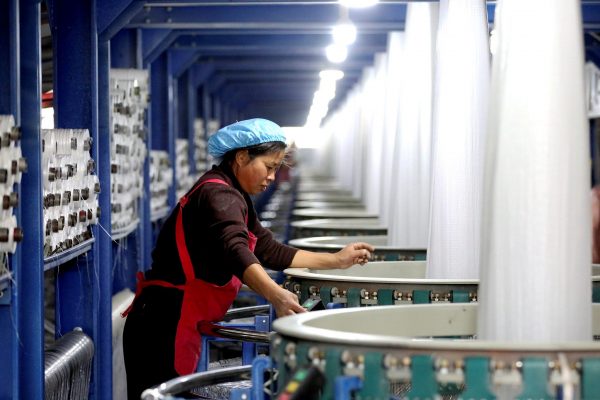For 25 consecutive years from 1990, China’s economy grew at more than 6 per cent a year. China’s growth performance is spectacular and exceptional. That exceptional growth was based fundamentally on a combination of low wages and a favourable demographic structure, the potential of which was converted into actual growth through a sequence of domestic market-oriented institutional reforms and greater openness to trade and foreign investment.
But since 2011 the Chinese workforce has been shrinking (due in part to the family planning policies of the previous three decades). Policy changes to extend the official retirement age or to encourage more female labour force participation will at best moderate the decline in the workforce. The relaxation of the one-child policy in November 2015 will, over the next decade and a half, make the dependency ratio worse, without altering the size of the workforce (no couple can give birth to a 16 year old).
Given such factors, growth in labour productivity must become an important driver of overall economic growth. In 2015, China’s investment to GDP ratio, at 43.3 per cent, was already high by international standards, making it doubtful continued physical investment would deliver a higher rate of labour productivity growth. Moreover, returns on investment have shown signs of decline since 2008.
Increased productivity could come from reducing resource misallocation, including via further reforms to state-owned enterprises (SOEs), but this area of potential productivity gains is also limited. The pace of future reform is unlikely to be as aggressive as in the past, partly because many of the low-hanging fruits have already been picked and partly because society (read: interest groups) now has greater means to block reforms than in earlier decades.
So can China rise to the challenge and transition to a more innovation-driven growth model? And what sort of policies should the government be pursuing to ease this transition?
By examining indicators on patents, we found that Chinese firms have become increasingly more innovative, in absolute terms and also relative to other major developing economies and major patent-filing economies. Specifically, the growth of patents granted to Chinese firms, both at home and in the United States, compares favourably with the experience of other BRICS countries and leading OECD countries once one takes into account the country’s size and income level. Taking advantage of the expanding global market and responding to rising labour costs are the two most important drivers of firms’ levels of innovation.
Besides the correlation between firm size and level of innovation, and between export status and level of innovation, we found several other patterns. First, expanding market opportunities in the form of lower tariffs from trading partners tend to promote innovation.
Second, firms respond to higher wages by engaging in more innovation. This is especially true for firms in labour-intensive sectors and sectors with more routine tasks. This pattern suggests some reason for optimism in terms of the prospect of Chinese firms becoming more innovative as the country’s income continues to rise.
Third, Chinese products have taken an increasingly large market share after controlling for population, the size of the economy and the unit values of export products. The increasing competitiveness of Chinese products in the international market suggests that Chinese products have exhibited quality improvement over time.
There is some evidence that innovation responds positively to subsidies and negatively to taxes. But subsidy allocation appears to be strongly biased in favour of SOEs, especially those owned by local governments. Yet, private sector firms exhibit a higher rate of innovation per renminbi invested in R&D than SOEs. If subsidies are meant to encourage innovation, the economy-wide innovation outcomes would have been greater if subsidies were directed to R&D rather than SOEs.
At the same time, the effective tax rate appears to vary not only across sectors, but also across firms. Interestingly, SOEs appear to face higher tax rates than private firms. Even after subtracting subsidies, SOEs — in particular, large ones — are still subject to higher tax burdens than private firms. This creates additional distortions.
The desired direction of reforms is likely in the form of simultaneous reductions in subsidies and taxes and more uniform treatment of firms across ownership type. Levelling the playing field for firms of all ownership type, limiting the government’s discretion in allocating subsidies for R&D and ensuring private sector firms have a fair chance at receiving those subsidies would reduce resource misallocation and improve efficiency.
Shang-Jin Wei is a Professor at Columbia University, New York, and Research Associate at the National Bureau of Economic Research.
Zhuan Xie is Research Fellow in the State Administration of Foreign Exchange (SAFE) of China, Beijing.
Xiaobo Zhang is Distinguished Professor at Peking University, Beijing, and Senior Research Fellow at the International Food Policy Research Institute, Washington.
This article is a digest of the authors’ chapter from the publication for the latest China Update. A free e-book is available here.


So, as other analyses have noted, the government needs to deal with the thorny challenges which the SOE’s favored status continue to present to the economy.
Not noted here is whether/how much the much needed shift away from the use of fossil fuels and towards renewable energy might affect China’s innovation? How much would improving its educational system also help in this regard?